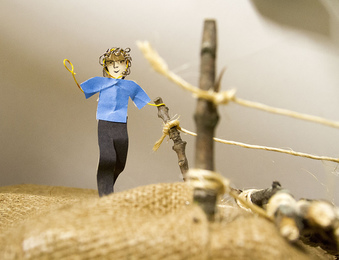
Iowa education code states: "Gifted and talented children" are those identified as possessing outstanding abilities that are capable of high performance. Gifted and talented children are children who require appropriate instruction and educational services commensurate with their abilities and needs beyond those provided by the regular school program. Gifted and talented children include those children with demonstrated achievement or potential ability, or both, in any of the following areas or in combination: 1. General intellectual ability. 2. Creative thinking. 3. Leadership ability. 4. Visual and performing arts ability. 5. Specific ability aptitude. (Iowa Code 257.44)
In the Des Moines Public Schools students are nominated by teachers, administrators, parents, and self-nomination for potential placement in the gifted and talented program. Multiple-criteria are always used to determine placement. For identification in visual art, the process is as follows:
In the Des Moines Public Schools students are nominated by teachers, administrators, parents, and self-nomination for potential placement in the gifted and talented program. Multiple-criteria are always used to determine placement. For identification in visual art, the process is as follows:
- Teachers will collect a portfolio of evidence (3-5 pieces) for the student. High quality color copies or digital photos are acceptable. Make a short note for each piece to give context for the committee. Example: This is a large scale canvas, 5’ x 9’ created outside of class.
- Teachers will complete a nomination form and GT Student Behavior Checklist for the student. These forms can be downloaded on the Visual Arts Curriculum Resources website or obtained directly from your building GT consultant (a list of assignments can be found here).
- Teachers will submit the portfolio and nomination form to their building GT consultant. If more evidence is needed, the GT consultant may provide a task for the student to complete.
- Portfolios will be reviewed by voluntary committees twice during the school year: October 15th and February 15th. Work and documentation must be submitted by these dates for consideration.
- Students are identified after a scaled rubric (also found on the Visual Art Curriculum Resources website) is applied to their work to include:
- Elaborates on other people’s ideas and uses them as a jumping off point as opposed to copying from others.
- Shows unique selection of art media for individual activity or classroom projects
- Has unusual and richly imaginative ideas
- Composes with unusual detail and skill
- Displays compulsive artistic pursuit

